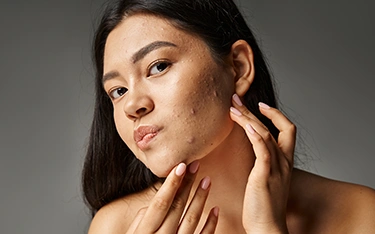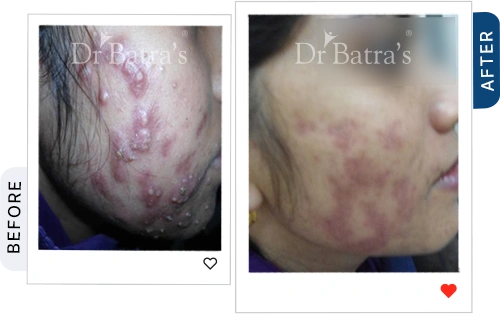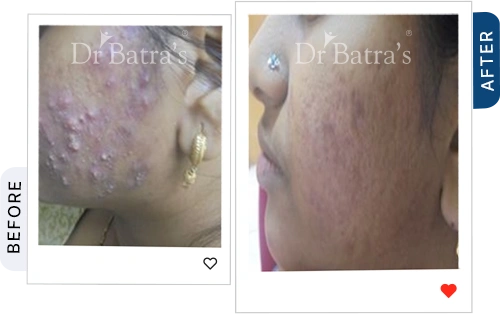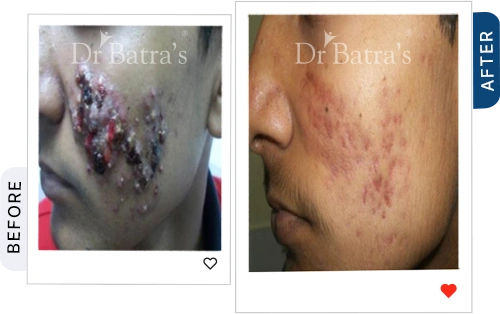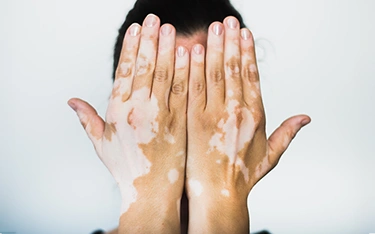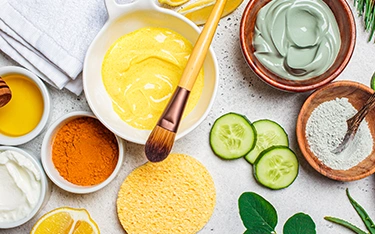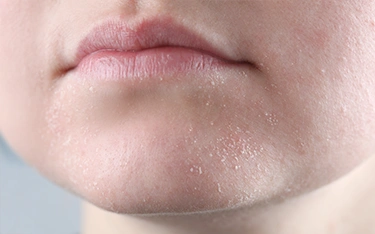FAQs
Hormonal acne is extremely common, especially among teenagers undergoing puberty and women aged 20–40. It is also prevalent in individuals experiencing hormonal fluctuations due to stress, lifestyle changes, or medical conditions, making it a widespread skin concern worldwide.
Fungal acne is caused by yeast overgrowth, appears as small, uniform bumps, and is often itchy. Hormonal acne develops deeper under the skin, is painful to touch, and usually occurs along the jawline, chin, or lower cheeks.
Hormonal acne can affect teenagers, menstruating women, women with PCOS, and people with hormonal imbalances caused by stress or poor gut health. Even men experiencing testosterone fluctuations can develop it, though it’s less common compared to women.
Yes. Hormonal changes during pregnancy can cause oil glands to become overactive, leading to clogged pores and acne flare-ups. It may worsen in some women, while in others, skin may temporarily improve due to hormonal balance shifts.
Stress, lack of quality sleep, high sugar and dairy intake, and harsh skincare products can worsen hormonal acne. Poor gut health and environmental pollution may also contribute, making consistent care and a balanced lifestyle essential for prevention.
If your breakouts cluster around the jawline, chin, or mouth area and flare up before, during, or after your menstrual cycle or stressful events, it’s likely hormonal. They are often painful, cyst-like, and slower to heal than regular pimples.
Hormonal acne can last for weeks to several months, depending on its triggers and treatment. Without proper care, it may persist or keep returning. Timely treatment helps shorten flare-ups and prevent deep scarring or pigmentation issues.
